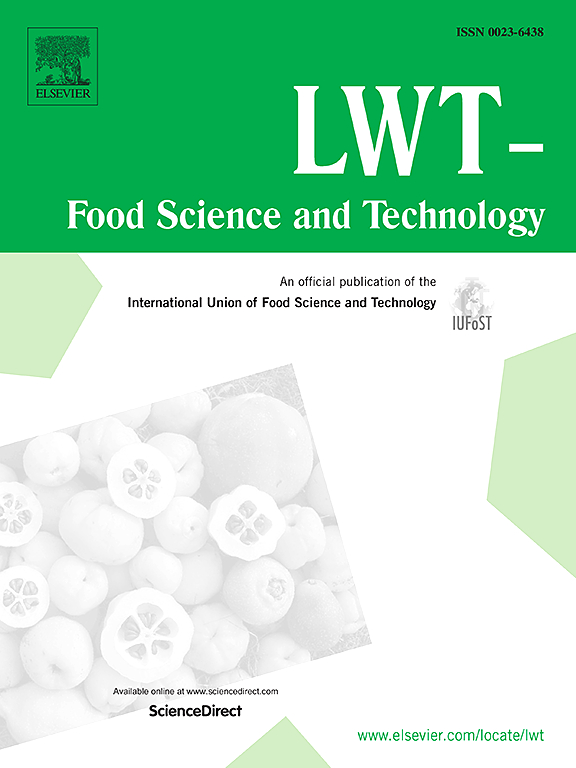The effect of heat shock protein 27 on the muscle softening of Esox lucius filets post-slaughter
IF 6
1区 农林科学
Q1 FOOD SCIENCE & TECHNOLOGY
引用次数: 0
Abstract
Heat shock protein 27 (HSP27) plays a crucial role in the apoptotic pathways associated with postmortem tissue softening in Esox lucius. However, its specific mechanisms require further investigation. This study investigated the relationship between HSP27 expression and muscle quality during postslaughter senescence, and further confirmed the association between HSP27 and apoptosis through the injection of the HSP27 specific inhibitor KRIBB3. The results indicated that storage at 4 °C inhibited the level of HSP27 and the caspase apoptosis signaling pathway is activated, which resulted in intracellular protein degradation, tissue softening, and increased free water content. The administration of KRIBB3 reduced HSP27 levels, leading to reduced binding of HSP27 to cytochrome c (Cyt-c) and increased release of Cyt-c. This alteration activated caspase-3 and caspase-9, ultimately causing cell apoptosis, protein degradation, and tissue softening. This study provides valuable insights into the mechanism of action of HSP27 in postmortem muscle softening in Esox lucius.
热休克蛋白27对青鱼屠宰后肌肉软化的影响
热休克蛋白27 (HSP27)在猕猴死后组织软化相关的凋亡通路中起关键作用。但其具体机制有待进一步研究。本研究考察了屠宰后衰老过程中HSP27的表达与肌肉质量的关系,并通过注射HSP27特异性抑制剂KRIBB3进一步证实了HSP27与细胞凋亡之间的关联。结果表明,4℃贮藏抑制了HSP27的表达,激活了caspase凋亡信号通路,导致细胞内蛋白降解,组织软化,游离水含量增加。KRIBB3降低了HSP27的水平,导致HSP27与细胞色素c (Cyt-c)的结合减少,Cyt-c的释放增加。这种改变激活了caspase-3和caspase-9,最终导致细胞凋亡、蛋白质降解和组织软化。本研究为热休克蛋白27在牛死后肌肉软化中的作用机制提供了有价值的见解。
本文章由计算机程序翻译,如有差异,请以英文原文为准。
求助全文
约1分钟内获得全文
求助全文
来源期刊

LWT - Food Science and Technology
工程技术-食品科技
CiteScore
11.80
自引率
6.70%
发文量
1724
审稿时长
65 days
期刊介绍:
LWT - Food Science and Technology is an international journal that publishes innovative papers in the fields of food chemistry, biochemistry, microbiology, technology and nutrition. The work described should be innovative either in the approach or in the methods used. The significance of the results either for the science community or for the food industry must also be specified. Contributions written in English are welcomed in the form of review articles, short reviews, research papers, and research notes. Papers featuring animal trials and cell cultures are outside the scope of the journal and will not be considered for publication.
 求助内容:
求助内容: 应助结果提醒方式:
应助结果提醒方式:


